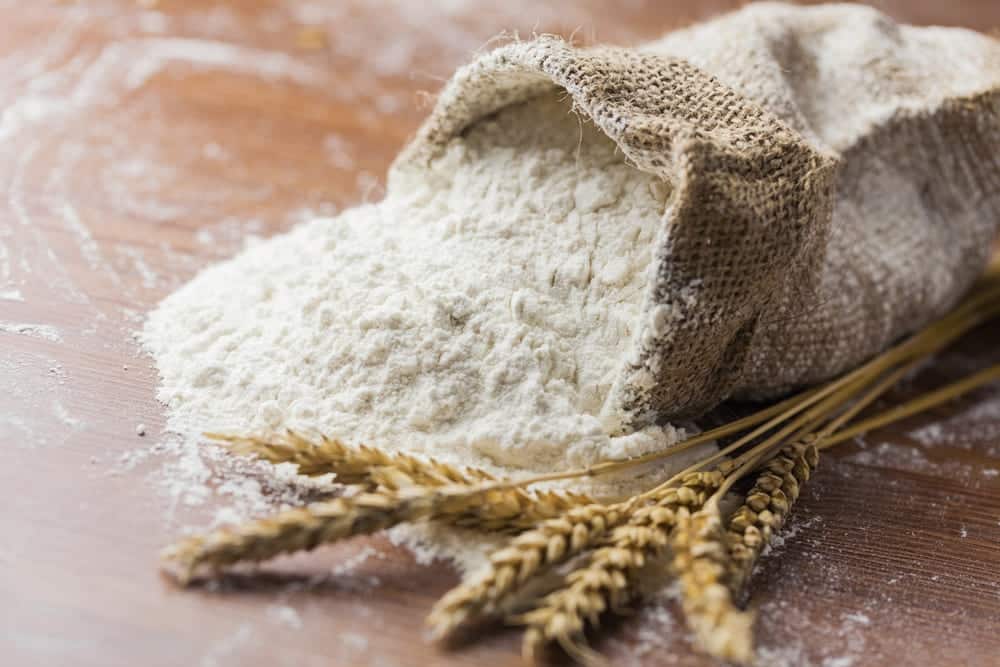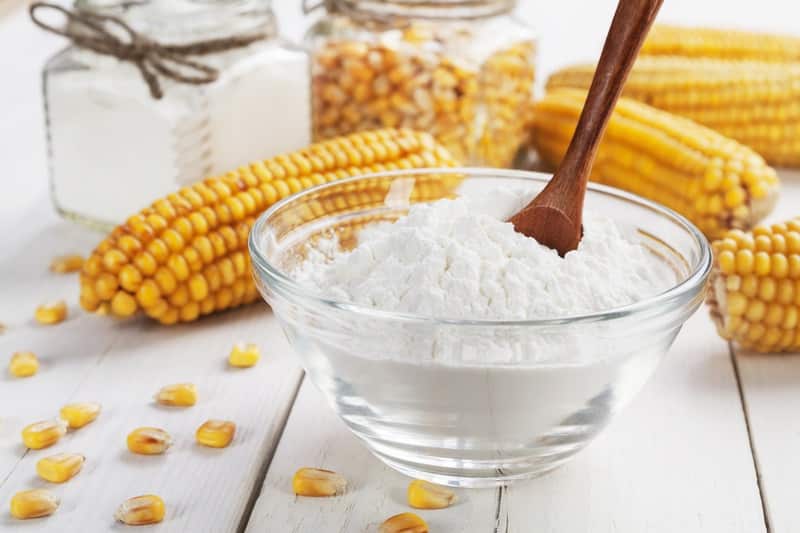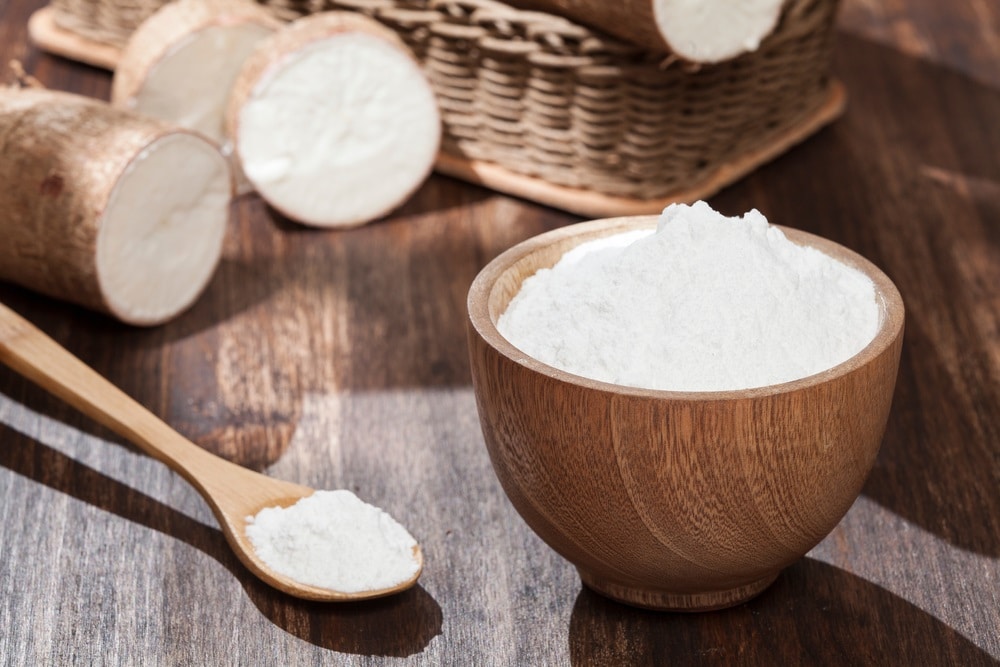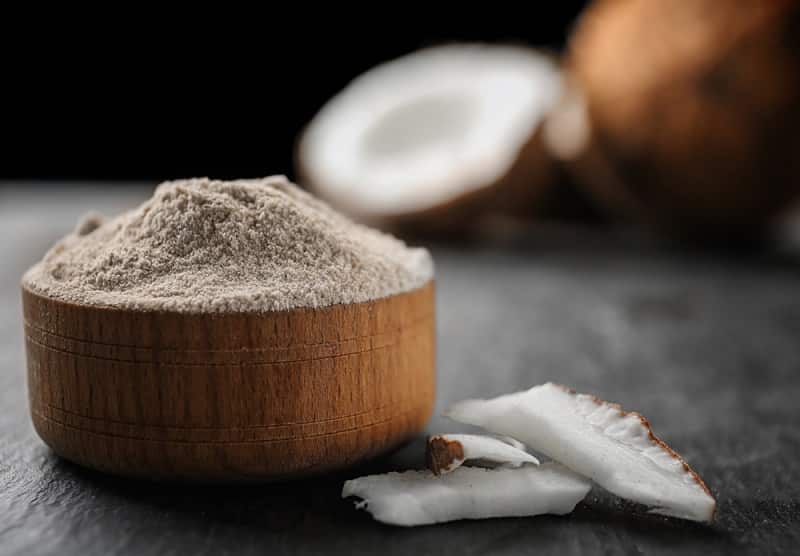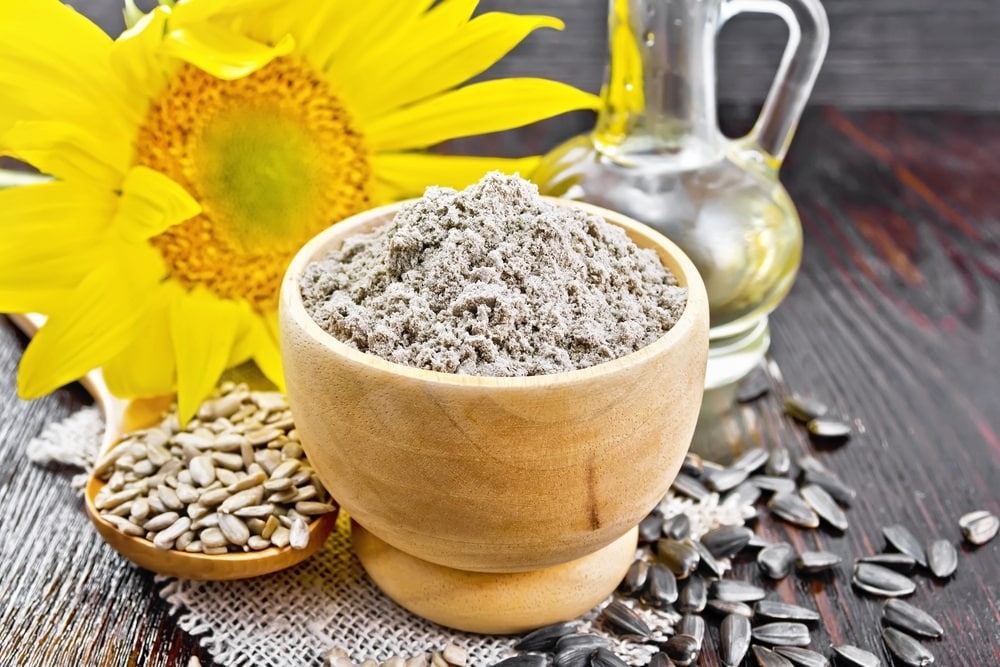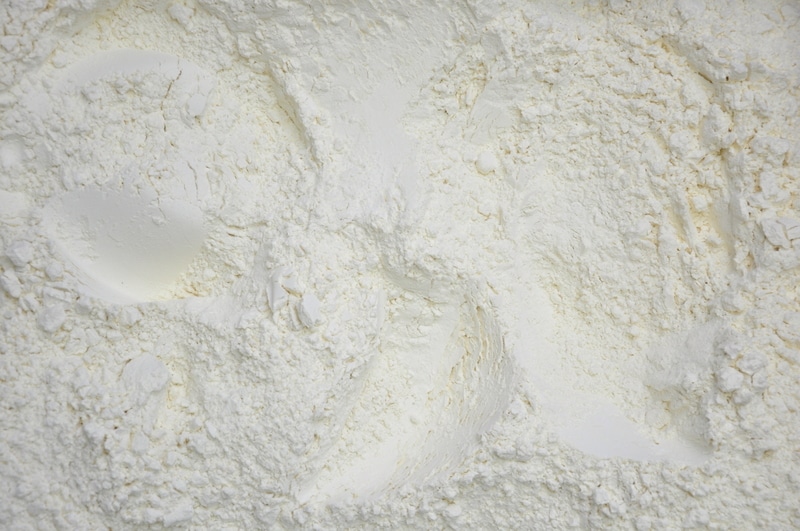
Konjac flour comes from the root of the Konjac plant. It has always been known as a medicinal food and for its starchy corn. This is a tuber-like part of the stem that grows underground. It is the corm that is used to make a rich source of soluble dietary fiber.
People use konjac as a noodle in stir-fries. They also use it in powder form in baked goods and sauces. You can say that the most common use of Konjac flour is as a thickener for pie fillings.
The flour absorbs water easily, forming a gel-like substance that is then used as a thickener.
Konjac Flour Substitutes
If you don’t have konjac flour, what can you use as a substitute?
- Arrowroot powder
- Wheat flour
- Cornstarch
- Potato four
- Tapioca flour
- Coconut flour
- Sunflower seed flour
1. Arrowroot Powder
Just like with konjac flour, arrowroot is also a gluten-free flour. It’s versatile and is used as a thickener. The flour works well in sweet and savory dishes and also has medicinal properties.
It is high in protein and easy to digest. It’s a great thickening agent to have on hand for all your sweet and savory dishes.
It’s a good replacement flour for when you don’t have konjac flour. Arrowroot is a tuber, and it doesn’t have any color or odor. It has a mild, sweetish taste. This is good news, as it doesn’t affect the color or flavor of any dish.
2. Wheat Flour
Out of all the flours, wheat flour is the most common flour used for baking. It’s the amount of gluten in wheat flour that distinguishes the different types. Gluten is actually wheat’s natural protein. When dough is kneaded, the gluten develops, making the dough elastic.
Both wheat flour and konjac flour have different characteristics, but wheat flour can be used to replace konjac flour. A lot depends on the recipe you have in mind. Wheat flour has a neutral flavor, so it can be used in sweet and savory recipes as a replacement for konjac flour.
3. Cornstarch
Call it cornstarch or cornflour, this white powder extracted from the endosperm of corn is used as a thickening agent. Both konjac and cornstarch are thickening agents. Cornstarch can be used in custards, sauces, gravies, and soups.
Like konjac, it’s an ingredient to be found in gluten-free recipes. This is because it is gluten-free in its natural form. You can therefore use cornstarch as a substitute for konjac powder in many recipes.
To use cornstarch instead of konjac, you would have to use more konjac. So if your recipe says to use a teaspoon of konjac, because of the 1:2 ratio, you would have to use 2 teaspoons of cornstarch.
4. Potato flour
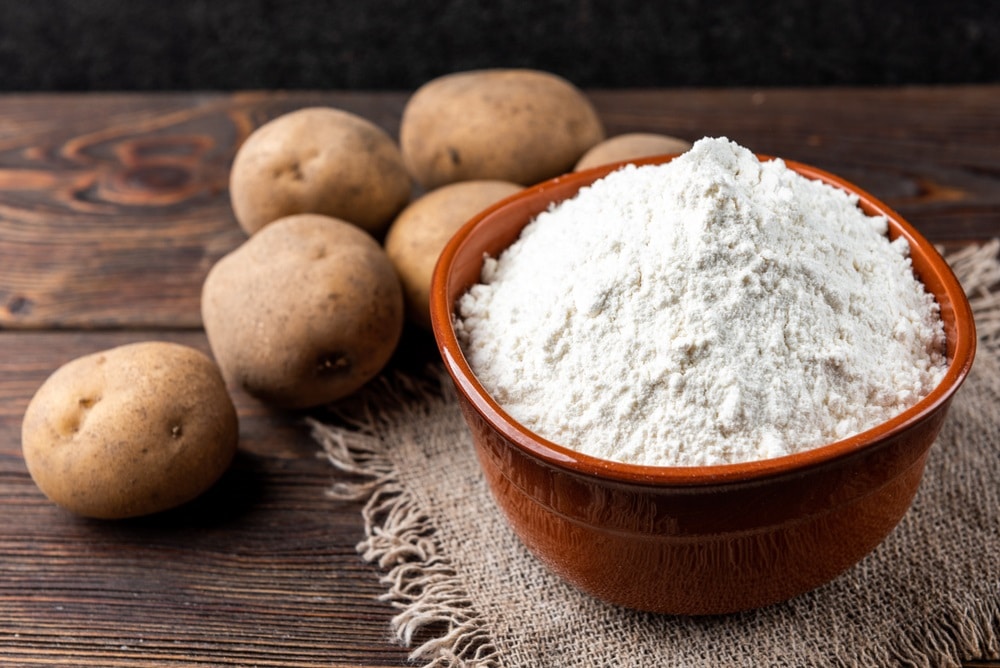
With a sweetish, nutty flavor, potato flour is made from your regular potatoes. The potatoes have been dried and ground into flour.
Just like other substitute flour for konjac flour, potato flour is gluten-free. Similar to konjac flour, it can be used as a thickener in soups and gravies and also as a binding agent.
This flour is also fine to use in sweet recipes. In some cases, and depending on the recipe, you may need to combine a few gluten-free flours. These are potato flour, tapioca flour, and rice flour. This ensures you get the right texture for your recipe.
5. Tapioca flour
Tapioca flour comes from the starchy vegetable known as the cassava root. The root is dehydrated and shredded. The dried pulp is then ground into flour. It is a sought-after ingredient for recipes that don’t contain gluten.
Tapioca flour is in fact naturally free from gluten. It is a lower-fiber alternative to konjac flour and is suitable for people who are allergic to nuts and grains.
Tapioca flour is pretty tasteless and odorless and is a great substitute for konjac flour. It can be used for thickening, binding, and also for moistening recipes. If you run out of konjac flour, you can easily substitute it by using tapioca flour.
6. Coconut flour
This flour is made from dried, ground coconut meat. The flour is an off-white color, and like konjac flour, it doesn’t contain gluten. It is starch-free but contains carbohydrates and is high in fiber.
Coconut flour requires more moisture when baking. This means you may need to add some extra butter.
Konjac and coconut flour have different properties, and using one to replace the other may require an adjustment to the recipe. You can use it to thicken gravies and sauces.
Just bear in mind that this flour has a strong coconut smell and flavor. You may not like the flavor of coconut in some of your savory dishes.
7. Sunflower seed flour
Sunflower seed flour comes from grinding the seeds to a powdery texture. It’s a grain-free flour and is higher in protein and lower in carbs than other flour.
It can also be used in any gluten-free recipe. Because the flour is also nut-free and keto-friendly, it’s a great flour to have in our kitchen for any dietary lifestyle.
Also, the flour has a neutral flavor, so it won’t impact the taste of any of your recipes. Sunflower seed flour can be used as a substitute for konjac flour in some recipes.
It isn’t as absorbent as konjac flour, so you might have to use less liquid in your recipe. Cooking experts say you can use roughly 1/2 cup of sunflower seed flour for every 1 cup of konjac flour.
Seven flours that can broaden your recipe repertoire
Konjac flour isn’t considered wheat. The flour is made from the root of the Konjac plant. Since Konjac has no net carbs and just 2 grams of total carbs, it is considered keto-friendly or ketogenic. The flour is also naturally gluten-free, as it doesn’t contain any wheat.
As you can see, with these substitute flours for konjac flour, you can broaden your gluten-free recipe repertoire with confidence.

